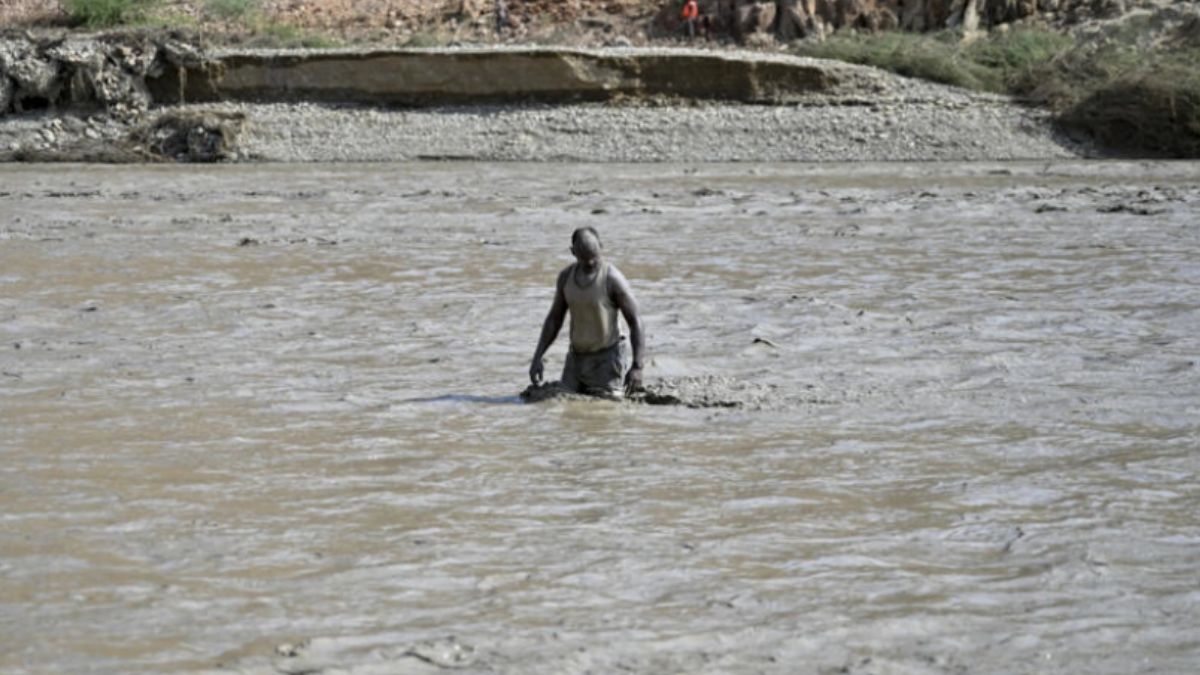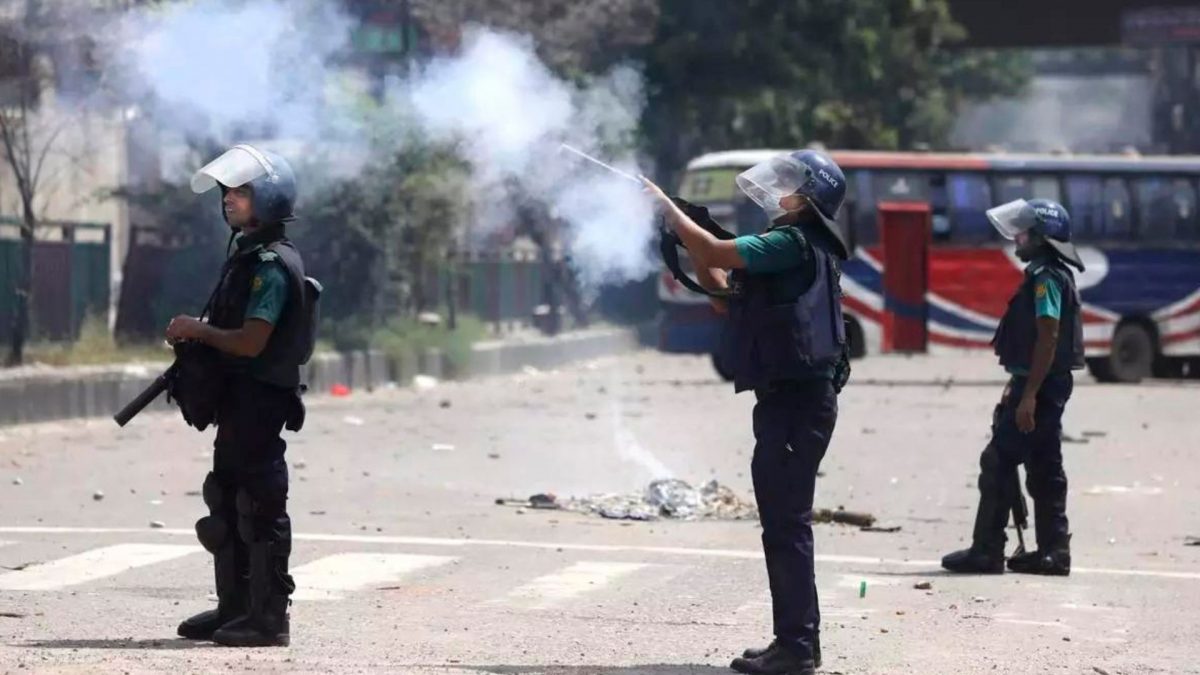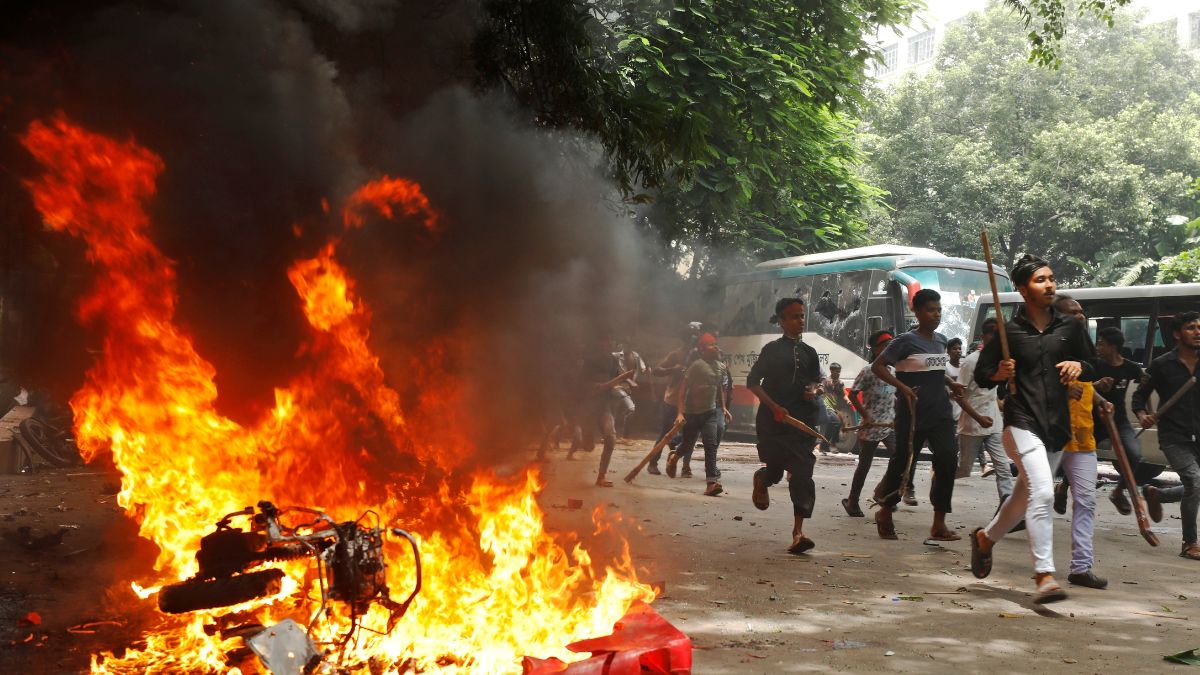‘The Global Times’ claims the IAF ‘should not see China as a rival’; rightly so, as China is an imminent threat to India’s national security read more
)
(File) A J-15 Chinese fighter jet prepares to take off from the Shandong aircraft carrier during the combat readiness patrol and military exercises around the Taiwan Island by the Eastern Theatre Command of the Chinese People's Liberation Army (PLA) on April 9, 2023. AP
The Global Times, a Chinese state-affiliated media outlet, cited experts on Tuesday who advised that the Indian Air Force (IAF) should not view China as a rival. This statement was a response to remarks made by Air Chief Marshal (ACM) AP Singh, who, in an interview with the Times of India on Monday, candidly acknowledged that India is “lagging behind” China in military technology and is “way behind” in defence production.
While ACM Singh’s assessment reflects a sober recognition of China’s advancements in technology, defence production, and infrastructure, the perspective presented by The Global Times raises critical questions. It is essential to recognise that China’s role extends beyond that of a mere rival; it poses a significant threat to India’s national security. If China were to be removed from India’s defence considerations, the landscape of security threats would change drastically, potentially allowing even Pakistan to align more closely with India.
Erosion of air combat advantage
Moreover, the assertion that China is “steadily eroding” India’s air combat advantage cannot be overlooked. This erosion is compounded by significant delays experienced by Hindustan Aeronautics Limited in delivering indigenously manufactured Tejas fighters, further exacerbating India’s challenges in maintaining a competitive edge in aerial combat capabilities.
India’s growing anxiety over its air security, particularly concerning China, stems from the latter’s substantial enhancement of air force infrastructure along the Line of Actual Control (LAC). This is especially pronounced in the Tibet and Xinjiang regions, where tensions between the two nations continue to simmer. A critical development is the recent deployment of J-20 stealth fighters at the Shigatse dual-use airbase, located just 150 kilometres from Sikkim. Satellite imagery reveals that six J-20 stealth fighters were stationed at Shigatse in 2024, highlighting its increasing strategic significance. This forward positioning of advanced fifth-generation aircraft is rare, as they usually remain stationed deeper within Chinese territory. Reports indicate that these J-20s arrived on May 27, 2024, alongside a Y-20 transport aircraft, pointing to a significant operational surge intended to bolster China’s military presence along the border.
Strategic upgrades and expansion
Another key facility, the Hotan Air Base in Xinjiang, has undergone substantial upgrades, including a second runway, expanded hangar space, and enhanced surface-to-air missile defences. These improvements significantly increase the base’s capability for both offensive and defensive operations, allowing for rapid deployment along the LAC.
Moreover, China is modernising several critical airbases in Tibet, including Ngari Gunsa, Lhasa Gonggar, and Hotan. Upgrades involve extending runways and enhancing logistical and radar capabilities, which facilitate a wider range of military operations.
Since 2017, China has developed or upgraded 37 heliports and airports in Tibet and Xinjiang. These projects are designed to improve surveillance and provide crucial connectivity in the challenging Himalayan terrain, enabling the People’s Liberation Army (PLA) to conduct reconnaissance, swiftly deploy troops, and launch potential strikes along the LAC.
As reported by Air and Space Forces Magazine, China currently produces over 100 J-20s annually for domestic use, further amplifying concerns regarding the balance of air power in the region.
In September of this year, reports emerged regarding China’s construction of a new heliport situated 20 kilometres east of the LAC in the strategically sensitive ‘Fishtails’ region of Arunachal Pradesh. This area, which includes Fishtail 1 in the Dibang Valley and Fishtail 2 in the Anjaw district, is particularly contentious due to the differing interpretations of the LAC by India and China.
According to reports, the heliport is located on the banks of the Gongrigabu Qu river in the Nyingchi Prefecture of the Tibet Autonomous Region, firmly within what China considers its undisputed territory. Satellite imagery from EOS Data Analytics revealed that, on December 1, 2023, no construction activity was apparent at the site. However, by December 31, land clearance had commenced, and recent high-resolution images from Maxar, dated September 16, 2024, indicated that the heliport is nearing completion.
This facility features a 600-metre runway specifically designed for rolling helicopter take-offs, which is crucial for operations at high altitudes. Although the heliport is situated at a relatively lower elevation compared to much of the Tibetan plateau—enhancing helicopter payload capacity—it remains a significant strategic asset for China in this region.
In addition to the runway, the heliport features hangars, a large apron area for helicopters, and essential air traffic control infrastructure. Its construction is indicative of China’s broader strategy to strengthen its border with India, which includes the establishment of ‘Xiaokang’ villages—dual-use settlements intended for both civilian and military purposes.
Realities of military expansion
In this context, it is bewildering for The Global Times to cite a military expert who accuses the IAF of “sensationalizing China’s reasonable and legitimate national defense development.” The reality is starkly different. During a Congressional testimony in March, Admiral John Aquilino, the former head of the US Indo-Pacific Command, cautioned that China could soon possess the world’s largest air force due to its aggressive modernisation efforts.
Should India not be genuinely concerned? Currently, it operates a fleet of 31 fighter jet squadrons—nine short of the minimum requirement of 42. While India strives to address these deficiencies, China is expanding its air force at an unprecedented rate.
Recent reports indicate that an IAF Rafale demonstrated its capability to “shoot down Chinese spy balloon-type objects,” a move aimed at countering Chinese surveillance activities, which has further alarmed Beijing. Wasn’t it China that initiated this spy balloon business that even spooked the United States? If China is indeed conducting military operations that undermine India’s national security, then India must take serious steps to counteract this threat. If China has the right to expand its military, so too does India.
A treacherous landscape
The relationship between India and China received a harsh reality check during the violent clash in the Galwan Valley in June 2020, which led to the tragic deaths of 20 Indian soldiers and four Chinese troops. Trust has eroded, giving way to an atmosphere of treachery. As both nations navigate this treacherous landscape, India must reassess its military strategies and capabilities in light of the ongoing challenges posed by China. A proactive approach to strengthening its defence posture will be crucial in safeguarding national security and maintaining stability in the region.

 1 month ago
9
1 month ago
9
)
)
)
)
)
)
)
)
)
)
)
)
)
)
)
)
)
)
)
)
)
)
)
)
)
 English (US) ·
English (US) ·